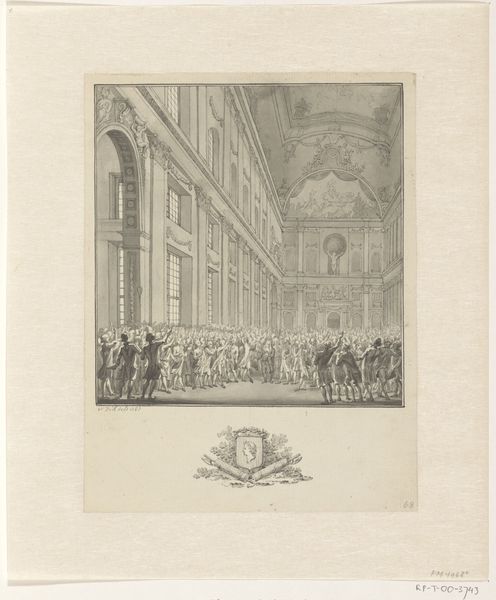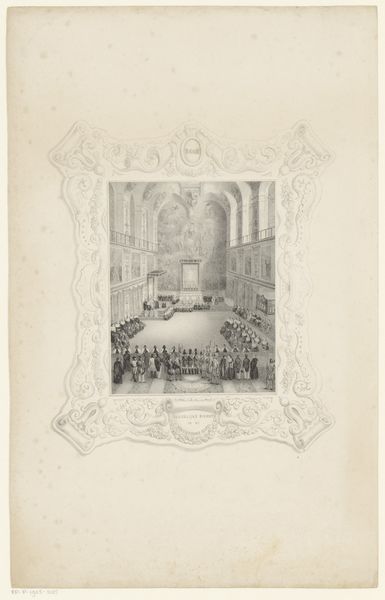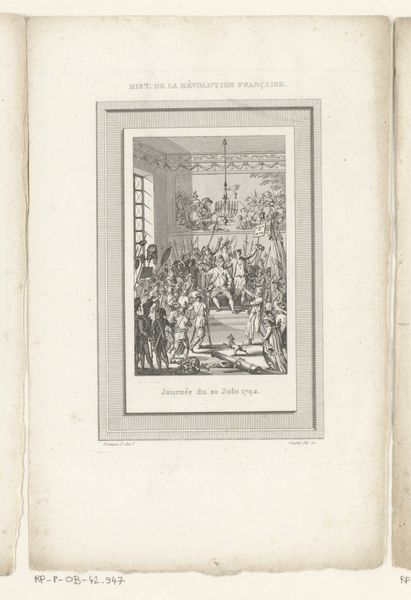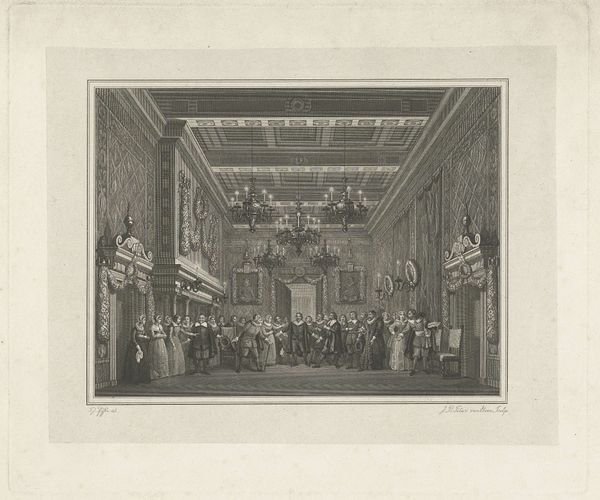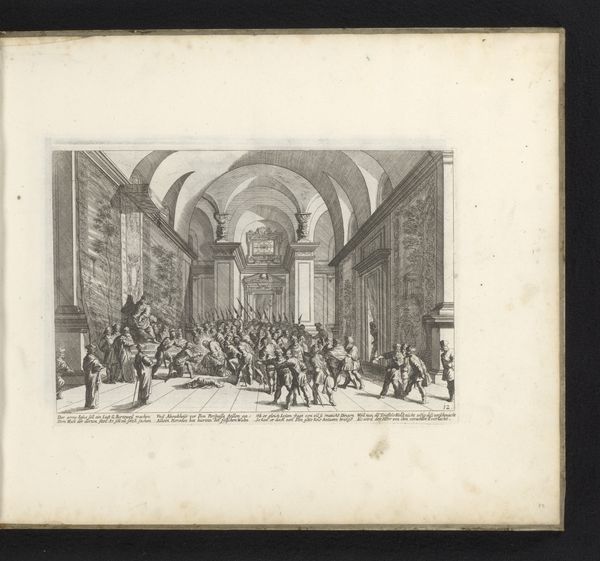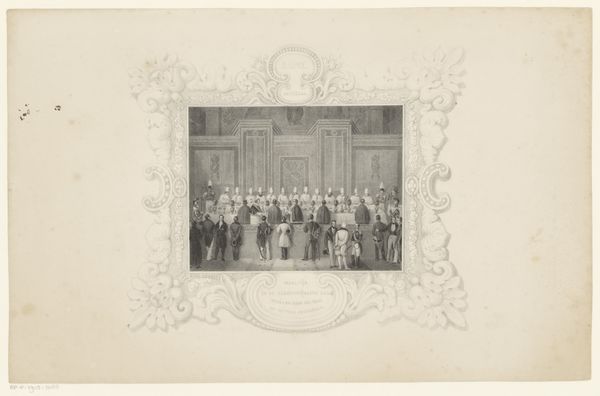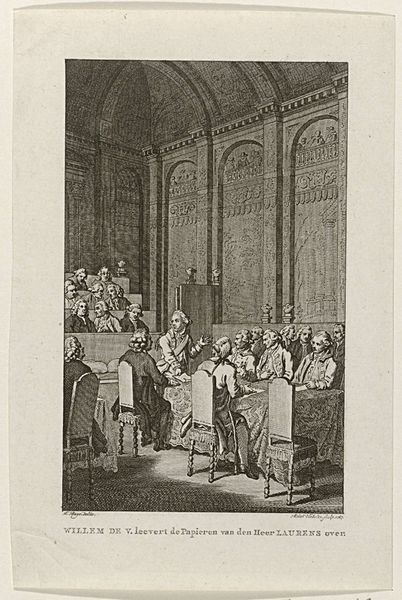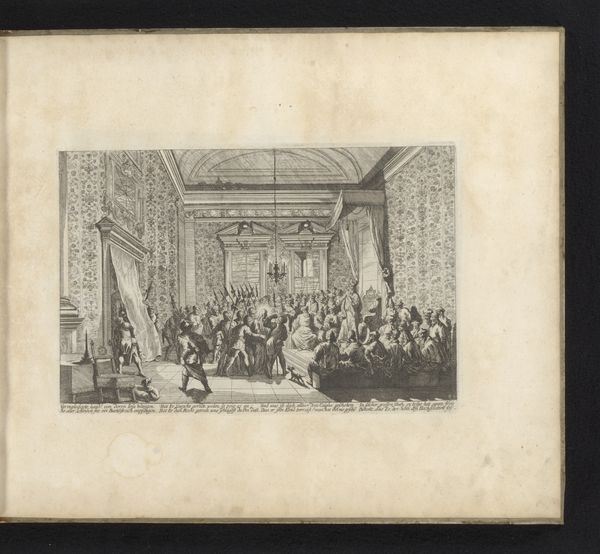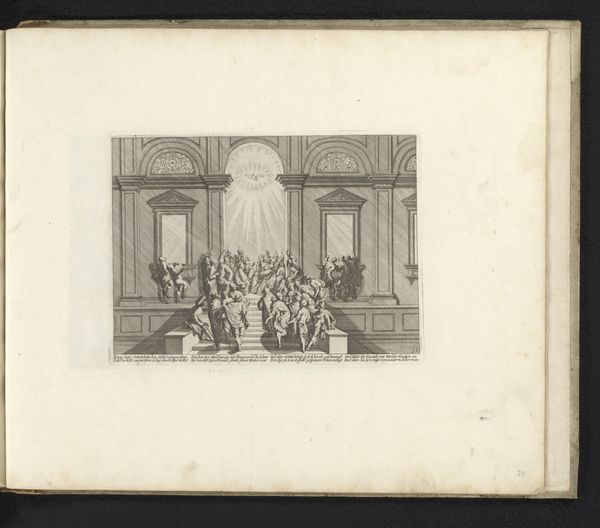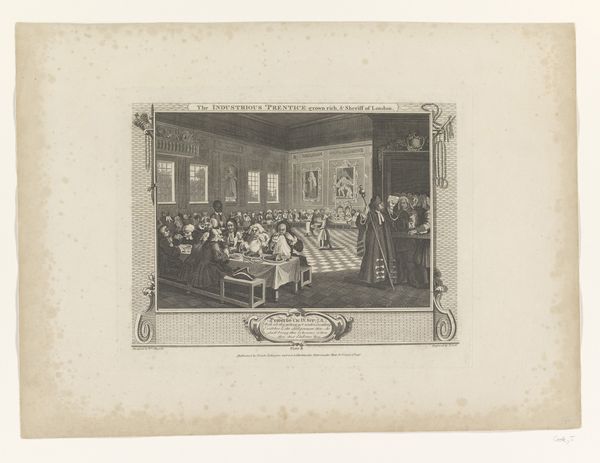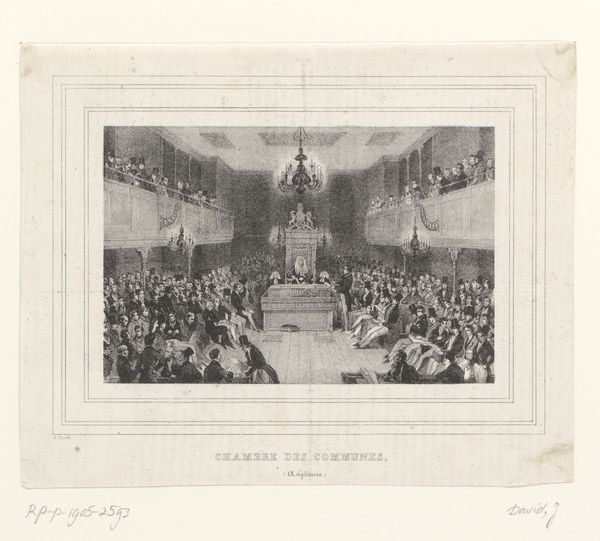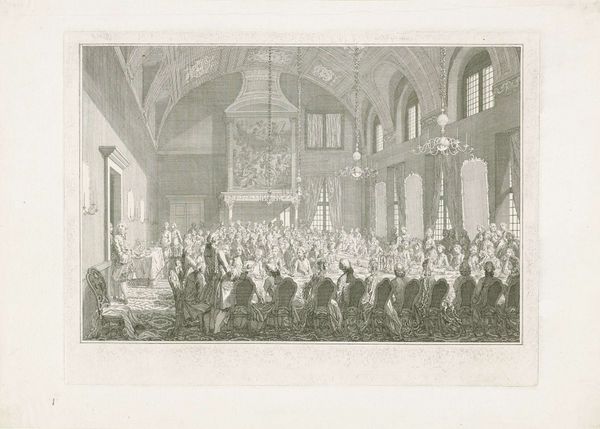
print, engraving
#
neoclacissism
# print
#
old engraving style
#
cityscape
#
genre-painting
#
history-painting
#
engraving
Dimensions: height 236 mm, width 185 mm
Copyright: Rijks Museum: Open Domain
Editor: Here we have "Menigte in het Stadhuis op de Dam, 1787", created by Willem Kok as an engraving. It portrays a vast crowd in what I presume is Amsterdam’s city hall. The overall impression is one of suppressed energy, almost chaotic, yet held within the rigid architecture. What symbolic readings can we unpack from this image? Curator: That's a wonderful observation. Note how the crowd, a churning sea of faces, gathers beneath the rigid architecture, dominated by classical motifs – consider that crucifix high above. Are these not potent symbols of opposing forces: earthly clamor and divine order? And the skull, prominently displayed beneath the main scene – what does it evoke for you? Editor: Mortality, of course. The fragility of life amidst political turmoil, perhaps? That skull is framed by a collection of items - laurel branches I think - items suggesting fame? Or peace? Curator: Exactly! And isn’t it curious how the artist juxtaposes the grandeur of the city hall, a symbol of civic power, with such direct reminders of human frailty? The print, as a medium, lends itself to wider distribution of imagery. So, the symbol becomes more readily disseminated throughout culture at large. Consider this image in the context of the burgeoning Enlightenment ideals vis-a-vis entrenched societal hierarchies of the late 18th century. Does this give you any additional interpretations? Editor: That makes me think about the role of the individual versus the collective. The figures seem almost anonymous, yet their collective action clearly holds power. It also strikes me that rendering political discourse accessible by engraving is a democratizing force itself. Curator: Precisely. Through its visual language, it prompts viewers to contemplate the delicate balance between individual agency and collective will and moreover between secular governance and mortality, all while navigating emerging ideological frameworks. This wasn't merely documentation; it was a visual argument, participating in a larger cultural dialogue. Editor: I hadn't considered the interplay of mortality and political discourse so directly. It's amazing how a single image can hold such layered meaning. Curator: Indeed. By recognizing and decoding these embedded symbols, we are better equipped to engage with cultural memory, tracing lines of continuity from past to present.
Comments
No comments
Be the first to comment and join the conversation on the ultimate creative platform.
